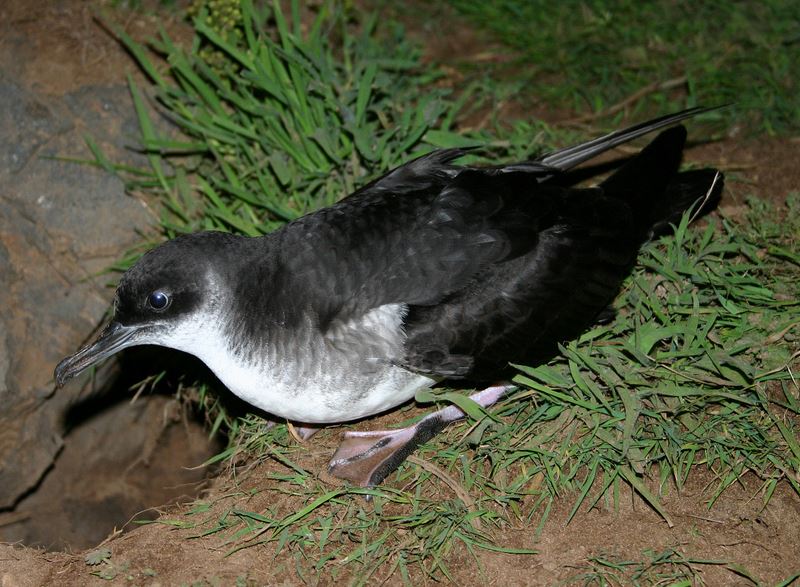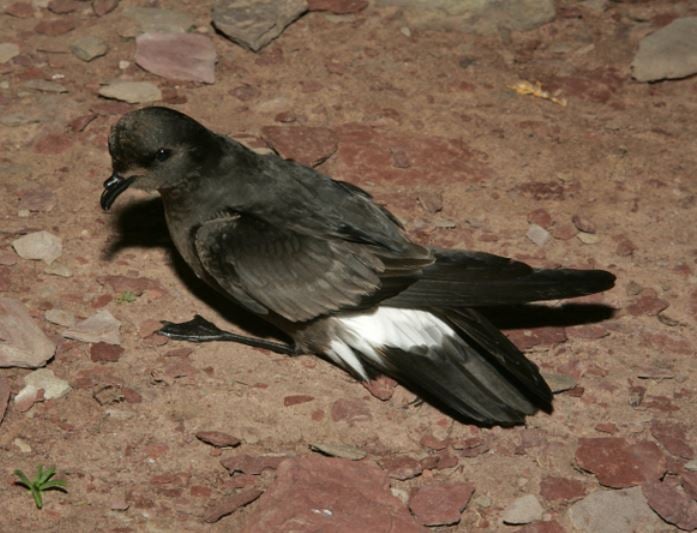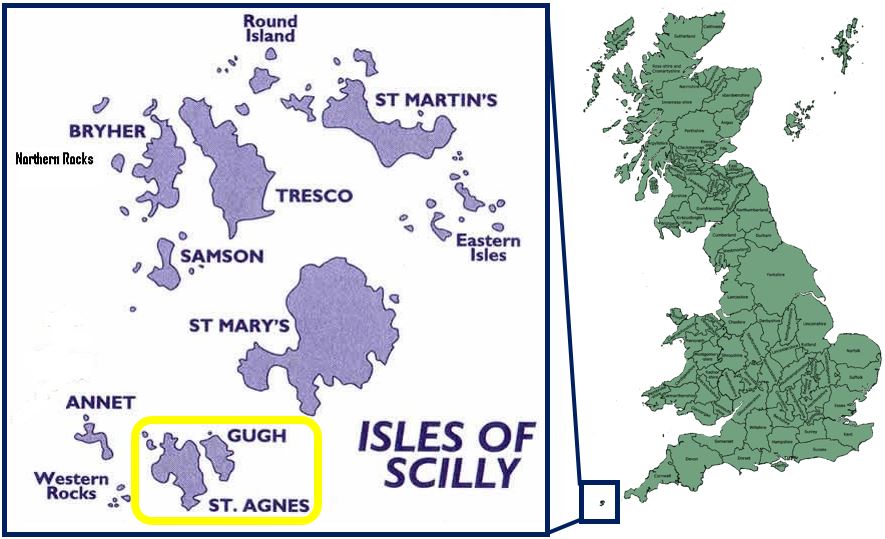Two islands in the Isles of Scilly – Gugh and St Agnes – are now officially rat-free, says the RSBP, claiming that efforts to protect seabird populations, which had been threatened by rats, have been successful. Seabirds that nest on the ground are starting to breed again now that the rats are gone.
After a comprehensive month-long inspection, specialists confirmed that the two islands were completely free of rats. In fact, the last rat sighting or any signs of rat activity were detected more than two years ago.
The RSPB (Royal Society for the Protection of Birds) said the Isles of Scilly scheme is the largest community-led project in the world to restore seabird populations by removing rats.
 Manx Shearwater (Puffinus puffinus) one of the most special seabirds to be found breedng in the Isles of Scilly. They breed in underground burrows, which makes them easy targets for rats.The Isles of Scilly Wildlife Trust says: “They spend the majority of the day out at sea feeding, returning to their nests under the cover of darkness so as to avoid predation by predators such as the great black-backed gull.” (Image: rspb.org.uk)
Manx Shearwater (Puffinus puffinus) one of the most special seabirds to be found breedng in the Isles of Scilly. They breed in underground burrows, which makes them easy targets for rats.The Isles of Scilly Wildlife Trust says: “They spend the majority of the day out at sea feeding, returning to their nests under the cover of darkness so as to avoid predation by predators such as the great black-backed gull.” (Image: rspb.org.uk)
Conservationists from the Isles of Scilly Seabird Recovery Project, island restoration specialists Wildlife Management International Ltd (WMIL), and several volunteers worked together to rid the islands of the non-native rats that were preying on seabirds.
Project a ‘huge success’
The project, which has been supported by the Heritage Lottery Fund and EU LIFE, plus some local organisations, to remove the invasive species, has been a ‘huge success’.
The brown rats arrived on the two islands about two hundred years ago following a number of shipwrecks. Their populations grew rapidly and they became harmful to the borrow-nesting seabirds that inhabit the islands, including Manx shearwaters and European storm petrels.
From the 1980s, the populations of these two bird species declined considerably, so conservationists decided on a plan to remove the rats.
Rat-eradication programme started in 2013
In 2013, work started with an intensive six-month operation to track rat activity on the islands. More than thirty local volunteers worked with WMIL to find rat nests as well as signs of activity.
This data was used to create a project for eradicating rats from the islands. For one month during the winter, there was an intensive programme of baiting and poisoning.
 A European Storm Petrel (Hydrobates pelagicus), the smallest seabird in the world. According to the Isles of Scilly Wildlife Trust: “They prefer to nest down underneath rocks that pile up on the shorelines of the uninhabited islands here, giving them and their chicks the protection from predators such as the larger gull species and rats.” (Image: rspb.org.uk)
A European Storm Petrel (Hydrobates pelagicus), the smallest seabird in the world. According to the Isles of Scilly Wildlife Trust: “They prefer to nest down underneath rocks that pile up on the shorelines of the uninhabited islands here, giving them and their chicks the protection from predators such as the larger gull species and rats.” (Image: rspb.org.uk)
On 8th November, 2013, baiting began, and continued on a daily basis. As the days passed they carefully monitored the amount of bait. By the end of the month the last evidence of the rodents was observed. Even though treatment and community projects continued, the project participants said they saw no further rat activity.
At the beginning of the year, the specialists returned to determine whether there were any signs that rats might still be present on the islands. On completion of this follow-up survey, the specialists announced that the islands of Gugh and St Agnes now meet the international criteria to be declared rat-free.
Seabirds breeding again
Since the rats have gone, the project team says it has seen both European storm petrels and Manx shearwaters successfully breeding on the islands – something that has not occurred ‘in living memory’. Over the past two years, more than forty chicks have been recorded on the islands.
Jaclyn Pearson, an RSPB employee who manages the project, said:
“Getting to this stage is a fantastic achievement and everyone involved is delighted that the islands are now officially rat free. This, and the recovery of the seabirds so early on, is testament to the hard work of the team and the 100% support from the local community.”
 The Isles of Scilly (pop: c. 2,200) are an archipelago off the southwestern tip of the Cornish peninsula of Great Britain. It is the southernmost location in the United Kingdom.
The Isles of Scilly (pop: c. 2,200) are an archipelago off the southwestern tip of the Cornish peninsula of Great Britain. It is the southernmost location in the United Kingdom.
“We look forward to continuing to work with the community for the next two years of the project and beyond.”
Senior Ecologist, Elizabeth Bell, from Wildlife Management International Ltd, said:
“The eradication of non-native brown rats from St Agnes and Gugh demonstrates that the techniques of ground-based bait station operations can be successfully utilised on inhabited islands throughout the UK and the world.”
Sarah Mason, Chief Executive of Isles of Scilly Wildlife Trust, which looks after most of the land on which the seabirds breed said:
“This is fantastic news for the seabirds of Scilly. The Trust’s land management work is now more important than ever; we must ensure that habitats across the islands are suitable for our iconic seabirds so that they can be enjoyed by future generations.”
Local representative Richard McCarthy said:
“St Agnes and Gugh are very special places. When I first learned that our community was being selected for this project, I was only too pleased to encourage fellow islanders to back rat removal. The speed with which this was achieved and seabird recovery began has surprised us all. Young and old, we must now do our level best to ensure that as far as possible we minimise the likelihood of rats returning.”
Project Supervisor Paul St Pierre, from the RSPB, said:
“This has been an amazing journey working with inspiring people to conserve some amazing birds. The work on St Agnes and Gugh is just the latest of an increasing number of successful island restoration projects that have taken place around the UK in recent years, helping many of the UK’s much loved but vulnerable seabird species.”
“St Agnes and Gugh have provided an excellent training ground for a generation of conservationists who can now use their skills on similar projects in the UK and elsewhere around the world.”
Video – Saving the seabirds in the Isles of Scilly
